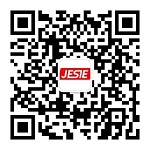Nanjing Metro
Cheryl Grzeda |
Nanjing is a massive city! With a population of over seven million people *, reliable transportation services are essential, and luckily, Nanjing’s transportation system is very efficient.
Nanjing currently has six metro lines, with a seventh line due to open early in 2017. One station along this new line, Yunnanlu, will be steps from JESIE and the vibrant university communities around Gulou District.
The Nanjing metro stretches from the far corner of northern Nanjing (Jinniuhu), to the southern reaches of the city (Lukou International Airport, Mozhoudonglu, and China Pharmaceutical University), with metro lines 1 and 3 connecting to both of Nanjing’s inter-city railway stations. While the metro is a great way to get around the city, getting from point to another can be time consuming; Nanjing does not have express trains, so riders must stop at every metro station along the way in order to get to their destination. The cost of each ride is determined according to distance travelled.
If you cannot read Chinese or understand Mandarin, don’t worry—announcements and information signs are usually in both Chinese and English. Each metro station has electronic boards located near the trains which show when the next train is due to arrive. Please note that while many inner-city lines run frequently, some outlying metros (such as Line S8) run less often, so plan your time accordingly.
The bus system in Nanjing is also excellent, and riders pay a single price for each trip. The number of buses on the road are staggering, but figuring out where you want to go can be a little more complicated than taking the metro. Bus routes are written entirely in Chinese, and finding an actual map is quite impossible. Buses must pull into each stop, so there is no need to ring a bell to be let off. Be forewarned: both metro trains and buses can be very crowded during peak hours, and buses proceed very slowly in heavy traffic. If you plan to travel frequently, it is recommended that you buy a transit card, available at metro station kiosks. The cost of the card is 50 RMB, and you have to provide your passport and other pertinent information before the card is given to you. Money can be added as needed. Adding money on the card, however, can be a bit of a chore. Most people line up at kiosks, located in every metro station, and have money charged to their card by a teller, but line-ups can be long. Some high-traffic stations in Nanjing’s central core have machines with which to add money to your card, but they are only in Chinese, and you can add only 50 or 100 RMB at a time. There are apparently some convenience stores which are willing to add money to your card as well, but you would have to ask around to see which stores provide this service.
Having a transit card has other benefits. If you have a medical problem and must go to the hospital (the only way to see a doctor), staff at the registration desk will use your transit card to register you, saving much time and effort. This card is also used when paying for medical fees and for prescription medications. If you are planning to stay in Nanjing, this card is certainly worth getting.
The transportation system here in Nanjing is excellent, and is a wonderful way to explore the city. I wish you happy travels! Useful website: https://www.travelchinaguide.com/cityguides/jiangsu/nanjing/transportation/ *source: http://worldpopulationreview.com/countries/china-population/cities/
|













